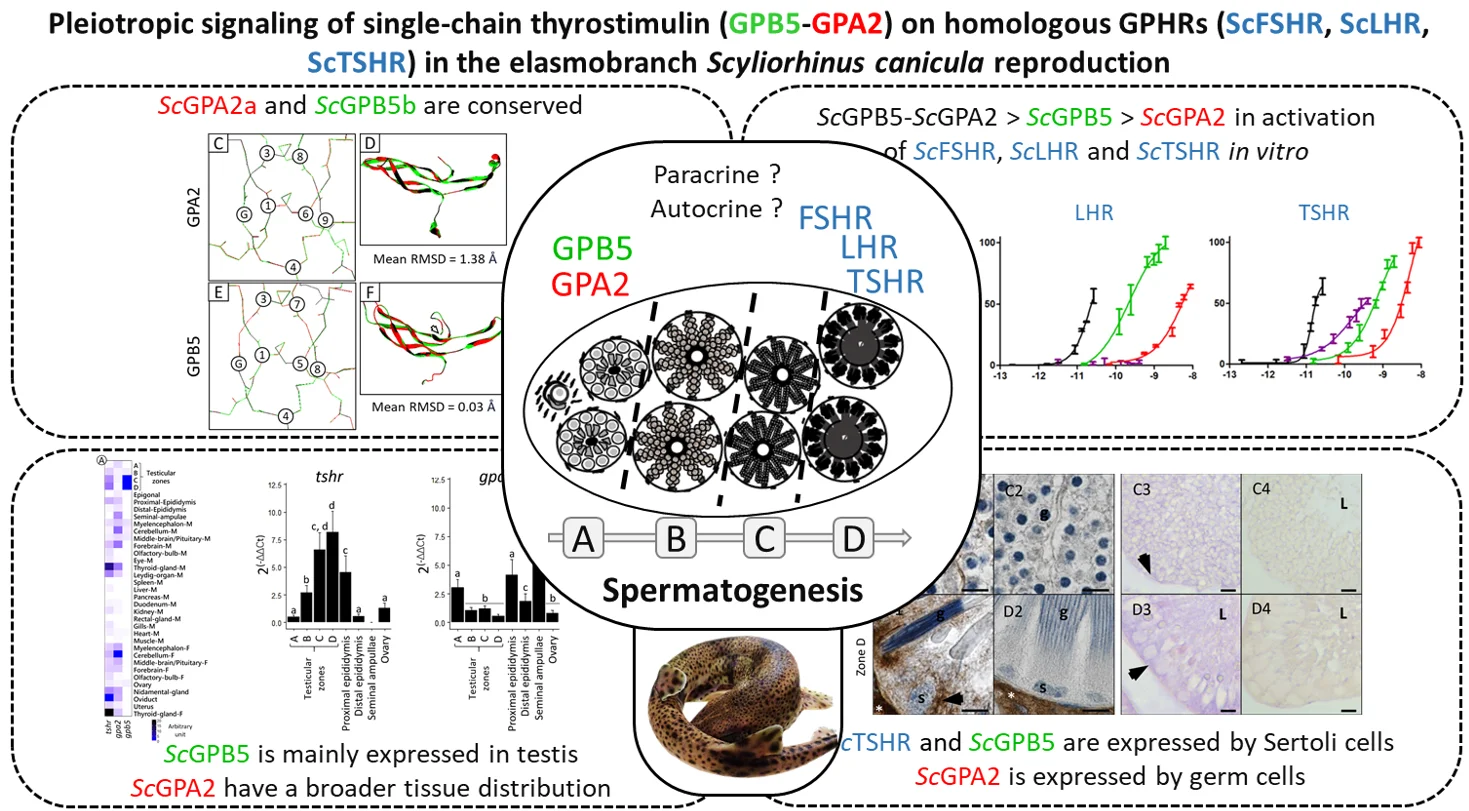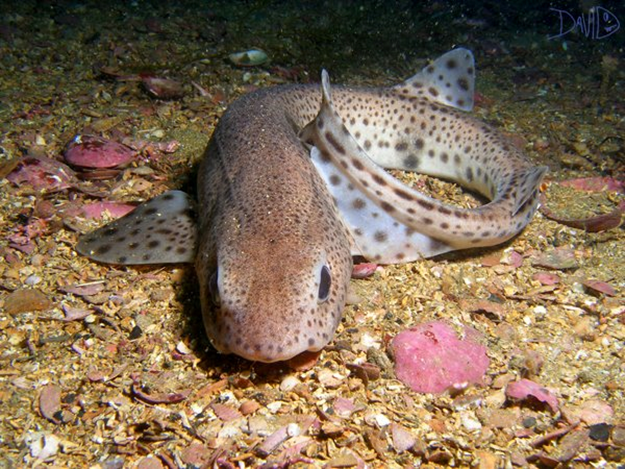Pleiotropic signaling of single-chain thyrostimulin (GPB5-GPA2) on homologous glycoprotein hormone receptors (ScFSHR, ScLHR, ScTSHR) in the elasmobranch Scyliorhinus canicula reproduction

Pituitary glycoprotein hormones (GPHs) regulate multiple physiological processes in vertebrates, including reproduction and metabolism. These hormones include luteinizing hormone (LH), follicle-stimulating hormone (FSH), and thyroid-stimulating hormone (TSH), which activate their respective G protein-coupled receptors (LHR, FSHR, and TSHR). Each GPH consists of a common α-subunit and a hormone-specific β-subunit (βFSH, βLH, or βTSH). More recently, two additional GPH-related proteins, GPA and GPB, have been identified in nearly all bilaterians; they represent the ancestral forms of the α- and β-subunits of pituitary GPHs, respectively.
Chondrichthyans (holocephalans and elasmobranchs), the sister group to bony vertebrates, represent the most ancient clade known to possess diversified GPH subunits. In this study, the sequences of GPA2, GPB5, TSHβ2 (but not TSHβ1), and TSHR were identified from several elasmobranch genomes, and their 3D models were analyzed. Functional hormone-receptor interactions were investigated in the small-spotted catshark (Scyliorhinus canicula), showing that conditioned media from cells expressing recombinant single-chain ScGPB5-ScGPA2 were more effective at activating ScTSHR, ScFSHR, and ScLHR than the individual subunits.
Expression profiles were analyzed using quantitative PCR, in situ hybridization, and immunohistochemistry along the male reproductive tract, other male and female tissues, and specifically in female tissues. A broader tissue distribution was observed for tshr and gpa2 than for gpb5, the latter being predominantly expressed in the testis. In the testes, tshr and gpb5 were expressed in Sertoli cells, while gpa2 was detected in germ cells, suggesting paracrine/autocrine functions for the GPA2/GPB5/GPHR signaling system during spermatogenesis in S. canicula.
This study complements existing knowledge on GPA2 and GPB5 by focusing on a phylogenetically relevant chondrichthyan species, contributing to a better understanding of the evolution of endocrine regulation in vertebrates.

